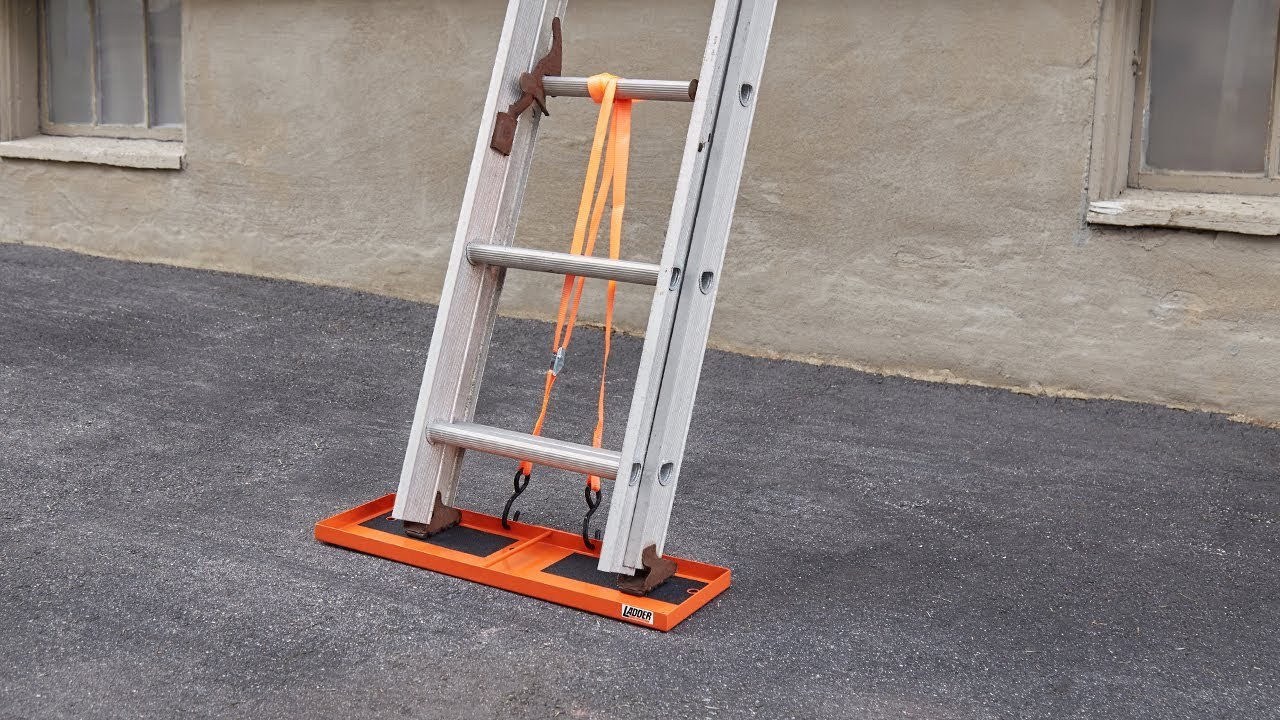

Articles
How To Stabilize A Ladder
Modified: October 31, 2024
Learn how to stabilize a ladder with these helpful articles. Find expert tips and techniques for ensuring safety and stability while working at heights.
(Many of the links in this article redirect to a specific reviewed product. Your purchase of these products through affiliate links helps to generate commission for Storables.com, at no extra cost. Learn more)
Introduction
A ladder is a universal tool that is commonly used in various industries and for a wide range of tasks. Whether you are a professional tradesperson or a homeowner tackling a DIY project, understanding ladder stability is of utmost importance to ensure safety and prevent accidents.
Stabilizing a ladder not only provides a secure and steady platform for you to work on, but it also helps to prevent the ladder from shifting or sliding. In this article, we will guide you through the essential steps to stabilize a ladder and offer valuable tips to enhance ladder safety.
Before we delve into the specifics of ladder stabilization, it is essential to understand how ladders work and the factors that contribute to their stability. Ladders typically consist of two vertical side rails connected by rungs or steps. These side rails provide the primary support, while your weight and gravity keep the ladder in place.
However, when using a ladder, it is crucial to consider the weight distribution and the stability of the surface on which the ladder is placed. Uneven ground, slippery surfaces, or unstable flooring can significantly affect ladder stability, increasing the risk of accidents and injuries.
By following the guidelines in this article, you will gain the knowledge and skills necessary to stabilize a ladder effectively. We will cover topics such as choosing the right surface, setting up the ladder correctly, positioning yourself correctly, using ladder stabilizers, maintaining ladder stability, and safety precautions to ensure a safe working environment.
Remember, safety should always be your top priority when working with a ladder. So let’s dive in and explore the steps to stabilize a ladder and ensure a secure working environment.
Key Takeaways:
- Proper ladder stabilization involves understanding weight distribution, surface conditions, and ladder angles to ensure stability and prevent accidents. Choosing the right surface and setting up the ladder correctly are essential for a secure working environment.
- Positioning yourself correctly on the ladder, using stabilizers, and maintaining ladder stability through regular inspections and safety precautions are crucial for safe and efficient work at height. Prioritizing safety and following guidelines is key to preventing accidents.
Read more: How To Use Ladder Stabilizer
Understanding ladder stability
Before you can effectively stabilize a ladder, it is important to have a solid understanding of ladder stability and the factors that contribute to it. Ladder stability refers to the ability of a ladder to remain upright and secure while bearing weight. Here are some key factors that affect ladder stability:
- Weight distribution: The way you distribute your weight on a ladder can greatly impact its stability. Always maintain a proper balance while on the ladder and avoid leaning too far to one side.
- Angles: The angle at which a ladder is positioned can affect its stability. The ideal ladder angle is around 75 degrees, which means the ladder should be positioned one foot away from the wall for every four feet of ladder height.
- Surface condition: The condition of the surface on which the ladder rests plays a crucial role in ladder stability. Look for a stable, level, and non-slippery surface to ensure a solid foundation for your ladder.
- Footwear: Wearing proper footwear with non-slip soles can help improve ladder stability by providing better traction between your feet and the ladder rungs.
By understanding these factors, you can take the necessary steps to enhance ladder stability and minimize the risk of accidents while working at height. In the next sections, we will discuss techniques and precautions to help you stabilize a ladder effectively.
Choosing the right surface
When stabilizing a ladder, selecting the proper surface is crucial for ensuring stability and safety. Here are some key considerations when choosing a surface for your ladder:
- Level ground: Look for a surface that is level and free from any unevenness or undulations. Uneven surfaces can cause the ladder to wobble or tilt, increasing the risk of accidents.
- Stability: The surface should be stable and capable of supporting the weight of the ladder and the person using it. Avoid placing the ladder on surfaces that are weak, such as loose soil, soft ground, or slippery areas.
- Non-slip: Opt for a surface that has good traction to prevent the ladder from sliding or slipping. Avoid surfaces that are wet, icy, or covered in debris. If necessary, consider using a non-slip mat or placing a piece of plywood under the ladder to improve stability.
- Avoid obstacles: Ensure that the area where you place the ladder is clear of any obstacles or obstructions. This will give you ample space to climb and work on the ladder without any hindrances.
It is also important to note that different types of ladders require different surfaces for optimal stability. For example, extension ladders are designed for use against a supporting structure, such as a wall or a roof, while step ladders are self-supporting and can be used on any flat surface.
Before using a ladder, carefully assess the surface conditions and make any necessary adjustments to ensure stability. By choosing the right surface, you are laying the foundation for a secure and safe ladder setup.
Setting up the ladder
Properly setting up the ladder is crucial for ensuring stability and safety during work at height. Follow these steps to correctly set up your ladder:
- Inspect the ladder: Before setting up the ladder, thoroughly inspect it for any damage or defects. Check the rungs, side rails, and any locking mechanisms to ensure they are in good condition.
- Choose the right ladder: Select the appropriate type and size of ladder for the task at hand. Be mindful of the ladder’s weight capacity to ensure it can safely support both your weight and any additional equipment or materials.
- Position the ladder: Position the ladder in a way that allows for a stable and secure setup. If using an extension ladder, ensure that the top section extends at least three feet above the landing or working surface.
- Angle the ladder: Set the ladder at the proper angle for optimal stability. The base of the ladder should be placed roughly one foot away from the wall or supporting surface for every four feet of ladder height. Use a ladder leveler or a spirit level to ensure the ladder is level.
- Secure the ladder: If possible, secure the ladder at the top or bottom to prevent it from slipping or shifting during use. You can use ladder stabilizers, ladder hooks, or ropes to secure the ladder to a solid object.
- Test the stability: Before ascending the ladder, give it a gentle shake to ensure it is stable and properly set up. If you notice any wobbling or instability, reposition the ladder and make any necessary adjustments.
Remember, never overreach or stand on the top few rungs of the ladder, as this can compromise stability and increase the risk of falling. Always maintain three points of contact with the ladder (such as two hands and one foot or two feet and one hand) to ensure stability while working.
By following these steps and taking the time to properly set up the ladder, you can significantly improve stability and safety during your work at height.
Positioning yourself correctly
In addition to stabilizing the ladder itself, positioning yourself correctly on the ladder is essential for maintaining stability and preventing accidents. Follow these guidelines for proper positioning:
- Climb facing the ladder: Always climb up and down the ladder facing it, maintaining a firm grip on the side rails. This helps you maintain your balance and ensures better control while ascending or descending.
- Center your body on the ladder: Position yourself in the center of the ladder, between the side rails. This helps distribute your weight evenly and maintains equilibrium, improving ladder stability.
- Keep your hips between the side rails: Align your hips with the side rails of the ladder, ensuring your body weight is evenly distributed and preventing the ladder from tipping.
- Don’t lean too far: Avoid leaning too far to one side while on the ladder, as this can cause imbalance and increase the risk of the ladder tipping over.
- Avoid sudden movements: When on the ladder, make any movements slowly and carefully. Sudden jerks or movements can throw off your balance and compromise ladder stability.
- Keep both feet on the ladder: Always maintain both feet on the ladder rungs and avoid stepping onto platforms or other surfaces that are not designed for standing.
While it may seem tempting to stretch or reach for something while on the ladder, overreaching can lead to loss of balance and potential falls. Instead, reposition the ladder or use tools with extension handles to reach your intended target.
Remember, your safety is of utmost importance, so take your time, focus on your positioning, and be mindful of any movements you make while on the ladder. By following these guidelines, you can ensure better stability and reduce the risk of accidents while working at height.
Always make sure the ladder is on a stable and level surface before climbing. Use ladder stabilizers or leg levelers if necessary. Check for any defects or damage before use.
Read also: 12 Best Ladder Stabilizer for 2025
Using ladder stabilizers
Ladder stabilizers are additional attachments or accessories that can be used to enhance the stability and safety of a ladder. They are designed to reduce lateral movement and prevent the ladder from tipping over. Here are a few common types of ladder stabilizers and how to use them:
1. Standoff stabilizers: Standoff stabilizers, also known as ladder stabilizer arms or wings, attach to the top of the ladder and extend outwards. They create a wider base of support, increasing stability and preventing the ladder from coming into contact with walls or other surfaces. When using a standoff stabilizer, make sure it is securely attached to the ladder and positioned properly to provide maximum stability.
2. Ladder levelers: Ladder levelers are adjustable devices that attach to the bottom of the ladder. They allow you to adjust the length of each leg individually, enabling you to place the ladder on uneven or sloping surfaces while maintaining stability. Before using ladder levelers, ensure that they are securely attached and correctly adjusted to provide a level base of support.
3. Ladder stabilizer bars: Stabilizer bars are horizontal bars that connect the two side rails of an extension ladder near the top. They provide additional stability by increasing the ladder’s overall rigidity and preventing sideways movement. Make sure the stabilizer bar is securely attached to the ladder and positioned correctly for optimal stability.
4. Ratcheting tie-down straps: Ratcheting tie-down straps can be used in conjunction with ladder stabilizers to secure the ladder to a sturdy structure or anchor point. They help to prevent the ladder from shifting or sliding during use and provide an extra level of stability. When using tie-down straps, ensure they are securely fastened and tight enough to keep the ladder in place.
It is important to follow the manufacturer’s instructions when using ladder stabilizers to ensure proper installation and usage. Regularly inspect the stabilizers for any signs of wear or damage and replace them if necessary. Remember, using ladder stabilizers should supplement proper ladder setup and positioning, not replace them.
By utilizing ladder stabilizers appropriately, you can enhance the stability and safety of your ladder, giving you peace of mind while working at height.
Maintaining ladder stability
Maintaining ladder stability is essential for safe and efficient work at height. Here are some important tips for keeping your ladder stable throughout your tasks:
- Regularly inspect the ladder: Before each use, inspect the ladder for any signs of damage, such as loose rungs, cracked side rails, or bent hardware. A well-maintained ladder is more likely to remain stable during use.
- Keep the ladder clean: Remove any dirt, debris, or slippery substances from the ladder before climbing. A clean ladder reduces the risk of slipping and helps maintain stability.
- Avoid excessive lateral movement: Minimize lateral movements while on the ladder, as shifting your weight from side to side can destabilize it. Make deliberate and controlled movements to maintain stability.
- Do not exceed the weight capacity: Each ladder has a specified weight capacity that should not be exceeded. Overloading the ladder can lead to instability and increases the risk of collapse. Refer to the ladder’s manufacturer guidelines for the safe weight limit.
- Secure tools and materials: When working on a ladder, secure your tools and materials in a tool belt or use a bucket and hoist system to prevent them from falling off. Falling objects can cause instability and pose a danger to yourself and others.
- Do not extend beyond the reach: Avoid reaching or leaning too far from the ladder while working. Maintaining a balanced and stable position on the ladder is crucial for your safety.
- Regularly reposition the ladder: If you need to move to a different area, descend from the ladder and reposition it rather than attempting to move it while you’re still on it. Proper repositioning ensures stability and reduces the risk of falls.
By practicing these maintenance tips, you can ensure that your ladder remains stable and reliable throughout your work. Regular inspections and adherence to safety guidelines are crucial for preventing any issues that could compromise ladder stability.
Safety precautions
When working with a ladder, it is essential to take proper safety precautions to minimize the risk of accidents and ensure a safe working environment. Here are some important safety measures to keep in mind:
- Read and follow instructions: Familiarize yourself with the ladder’s instructions and safety guidelines provided by the manufacturer. Understanding how to correctly set up, use, and store the ladder is crucial for your safety.
- Wear appropriate safety gear: Always wear appropriate safety gear, including a hard hat, non-slip shoes, and safety harnesses if necessary. Protective gear can minimize the risk of injuries in case of a fall or other accidents.
- Ensure proper lighting: Use proper lighting in your work area to ensure clear visibility. A well-lit area helps you see potential hazards and maintain better balance on the ladder.
- Keep children and pets away: Children and pets should be kept at a safe distance from your work area. Their presence can distract you or accidentally cause the ladder to shift, leading to instability and accidents.
- Do not work in inclement weather: Avoid using a ladder during inclement weather conditions, such as strong winds, rain, or snow. These conditions can compromise ladder stability and pose additional risks.
- Inspect the ladder before each use: Thoroughly inspect the ladder for any signs of damage or defects before using it. Look for loose rungs, cracked side rails, or any other issues that could compromise stability. If you notice any problems, do not use the ladder and have it repaired or replaced.
- Inform others about your work: If you are working in a shared space or a high-traffic area, inform others about your presence and the work you will be doing. This helps prevent accidental collisions or disturbances that could compromise ladder stability.
- Use a spotter if necessary: When working on a ladder that requires stability assistance or involves a complex task, consider having a spotter nearby to provide additional support and help maintain ladder stability.
Remember, ladder safety is a shared responsibility. By taking proper precautions and following safety guidelines, you can create a secure working environment and reduce the risk of accidents and injuries.
Conclusion
A stable ladder is the foundation of safe and successful work at height. Whether you are a professional tradesperson or a homeowner tackling a DIY project, understanding ladder stability is crucial to prevent accidents and ensure your safety. By following the steps outlined in this article, you can effectively stabilize a ladder and create a secure working environment.
Start by understanding ladder stability and the factors that contribute to it. Consider weight distribution, ladder angle, surface condition, and proper footwear to enhance stability. Choose a level, stable, and non-slip surface to set up your ladder, ensuring it is positioned correctly with the appropriate angle.
Position yourself correctly on the ladder by facing it, centering your body, and keeping your hips between the side rails. Avoid leaning too far and maintain both feet on the ladder rungs at all times. Additionally, using ladder stabilizers such as standoff stabilizers, ladder levelers, stabilizer bars, or tie-down straps can further enhance stability.
Maintaining ladder stability is crucial for your safety. Regularly inspect the ladder, keep it clean, avoid excessive lateral movement, and do not exceed its weight capacity. Secure tools and materials to prevent them from falling, and always position yourself properly without overreaching or leaning too far.
Lastly, remember to take necessary safety precautions. Read and follow ladder instructions, wear appropriate safety gear, ensure proper lighting, and keep children and pets away from your work area. Regularly inspect the ladder before each use and inform others about your work when necessary.
By implementing these guidelines and safety measures, you can greatly enhance ladder stability and reduce the risk of accidents and injuries. Remember, safety should always be your top priority when working with a ladder. So, stay vigilant, follow the necessary steps, and enjoy a safe and successful experience when working at height.
Now that you've mastered ladder stability, why not deepen your understanding of safety measures in more robust environments? Our next article delves into the critical aspects of construction safety, highlighting why every precaution matters in building projects. Ensuring safe practices isn't just about following rules; it's about creating a secure workspace that guards against accidents and ensures everyone goes home healthy. So, if staying safe on the job sounds like a plan, you'll definitely want to check out our insights on why taking safety seriously in construction zones is non-negotiable.
Frequently Asked Questions about How To Stabilize A Ladder
Was this page helpful?
At Storables.com, we guarantee accurate and reliable information. Our content, validated by Expert Board Contributors, is crafted following stringent Editorial Policies. We're committed to providing you with well-researched, expert-backed insights for all your informational needs.

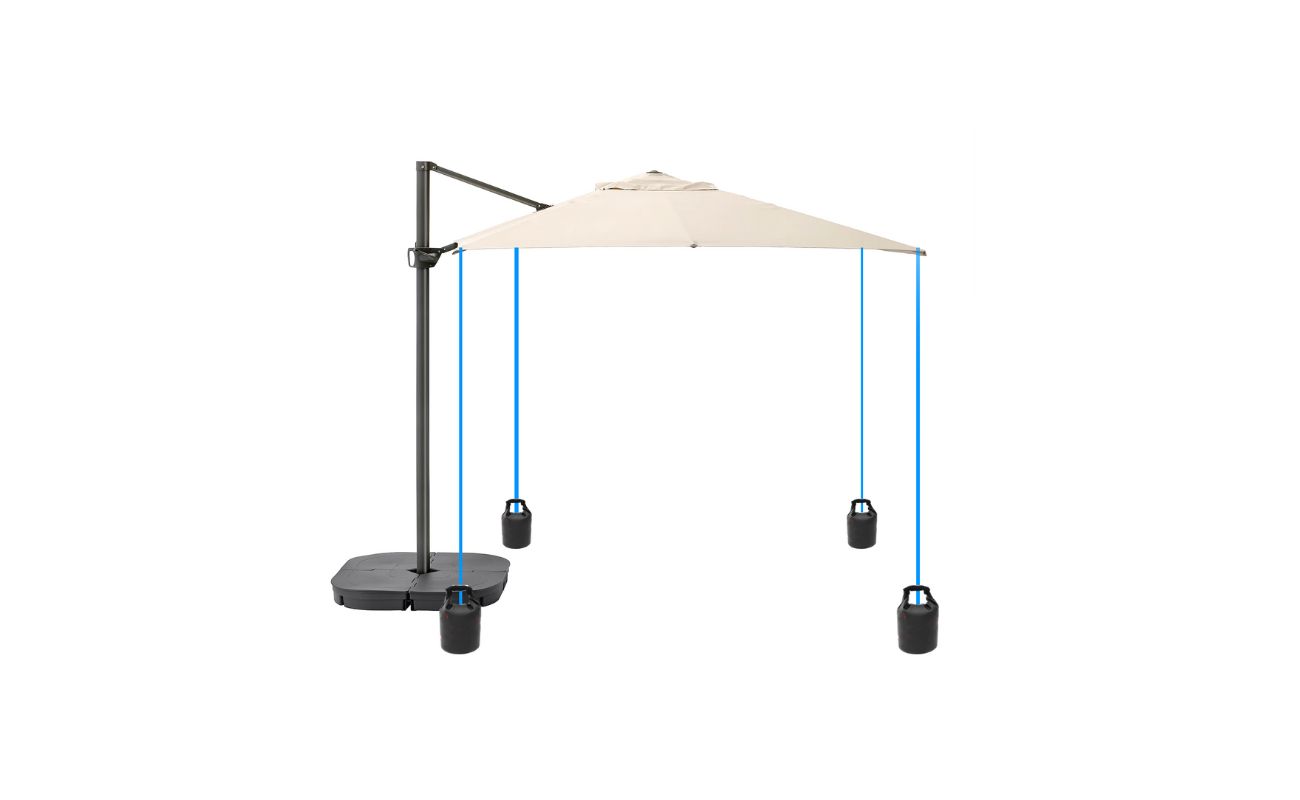



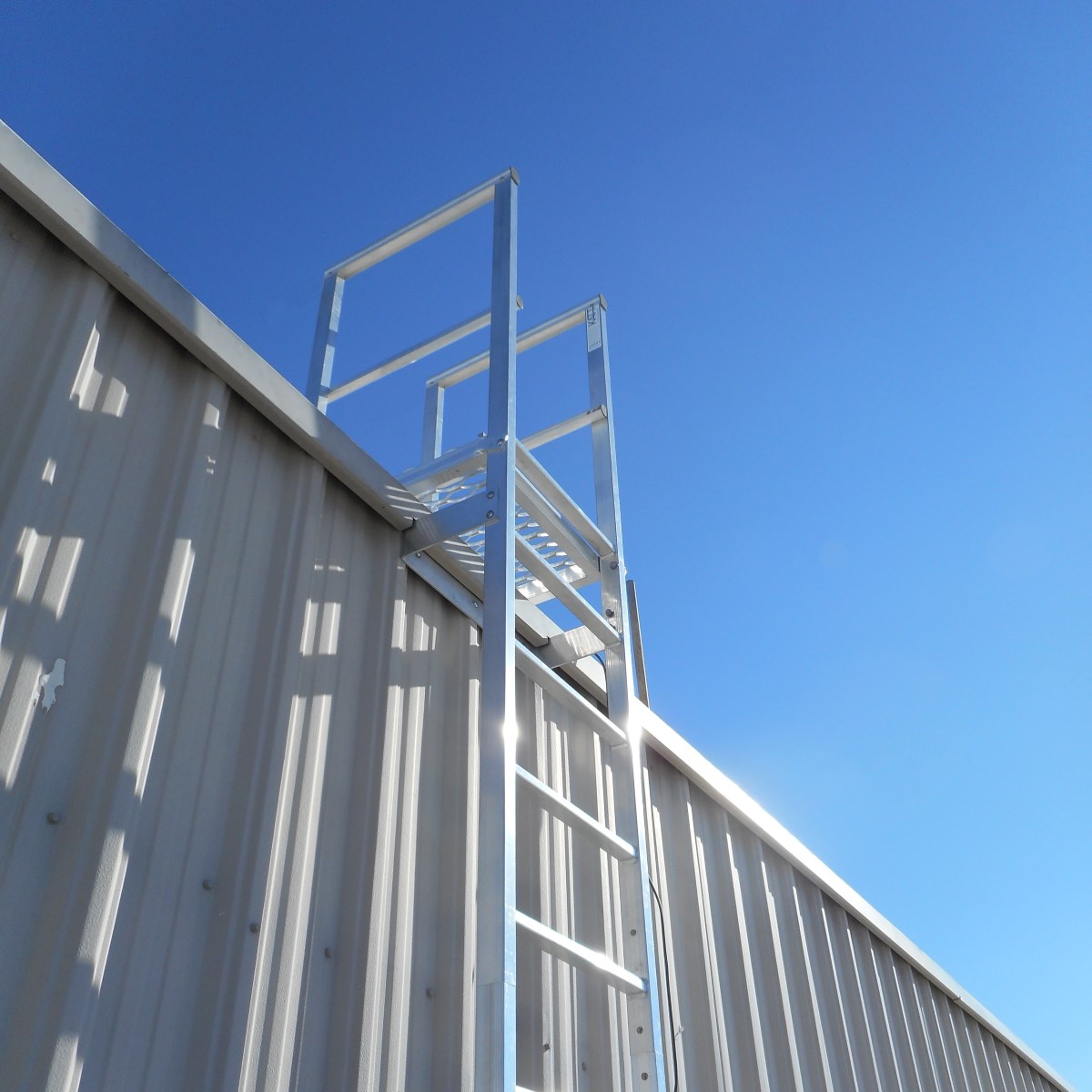
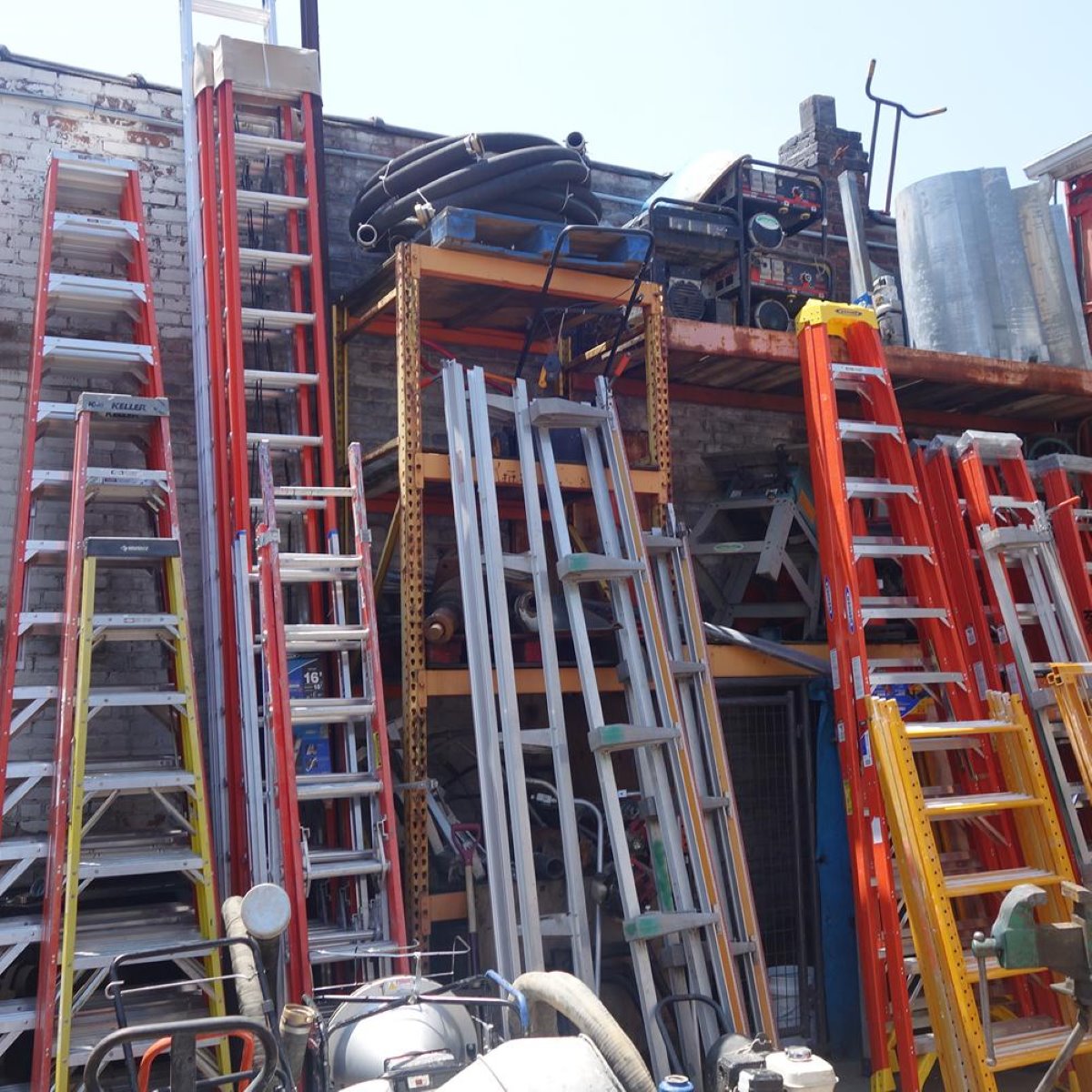
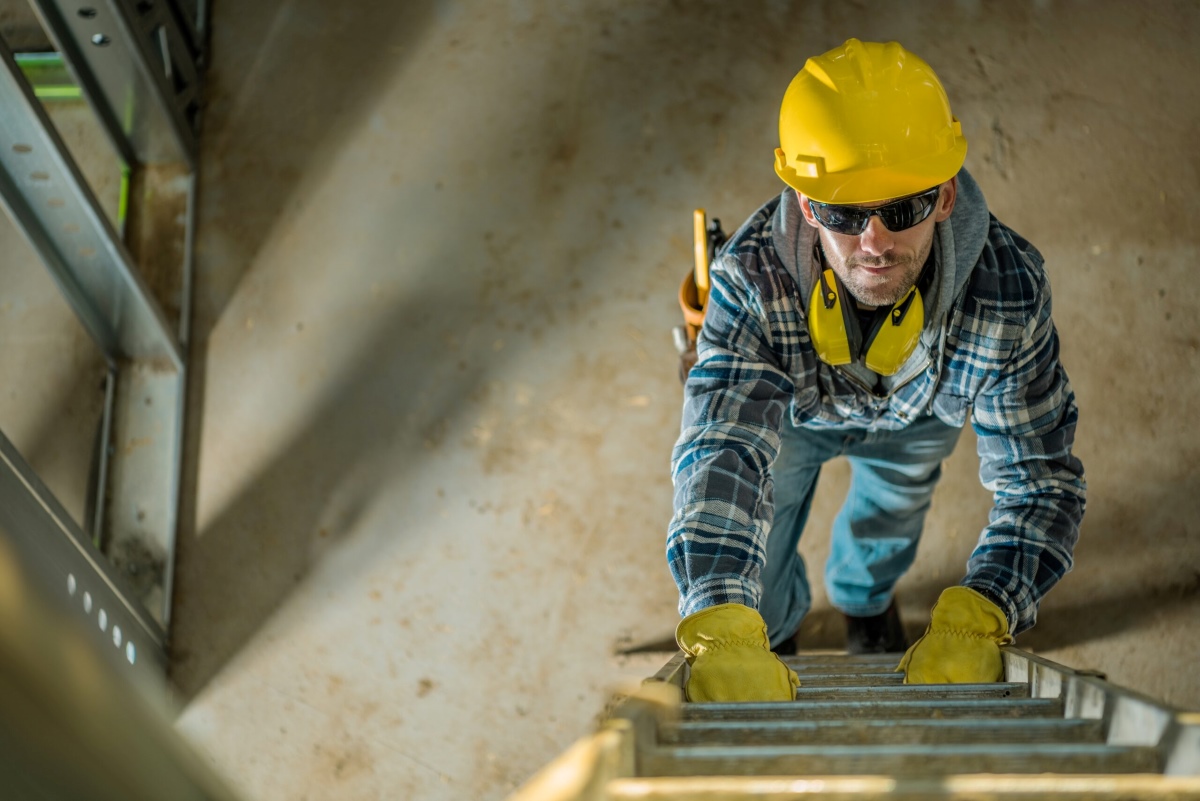
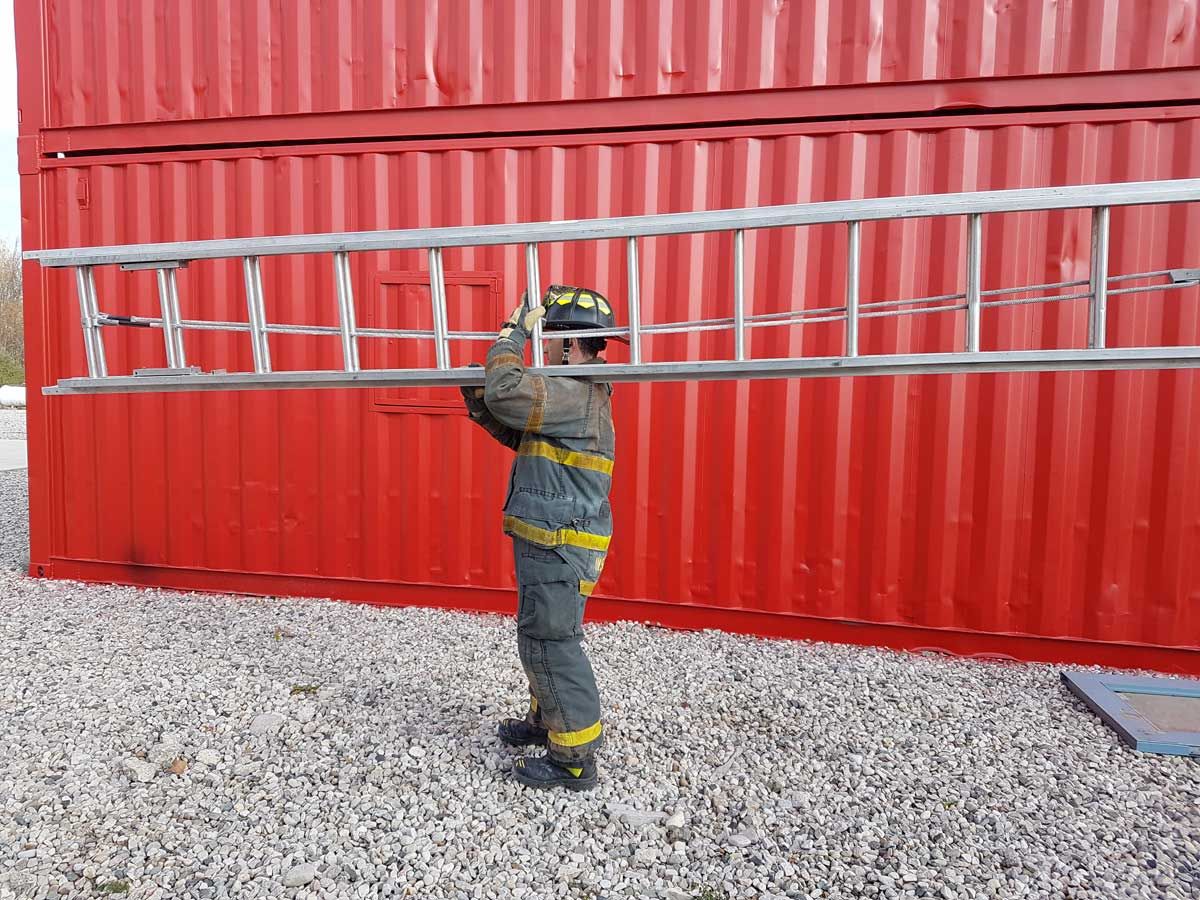
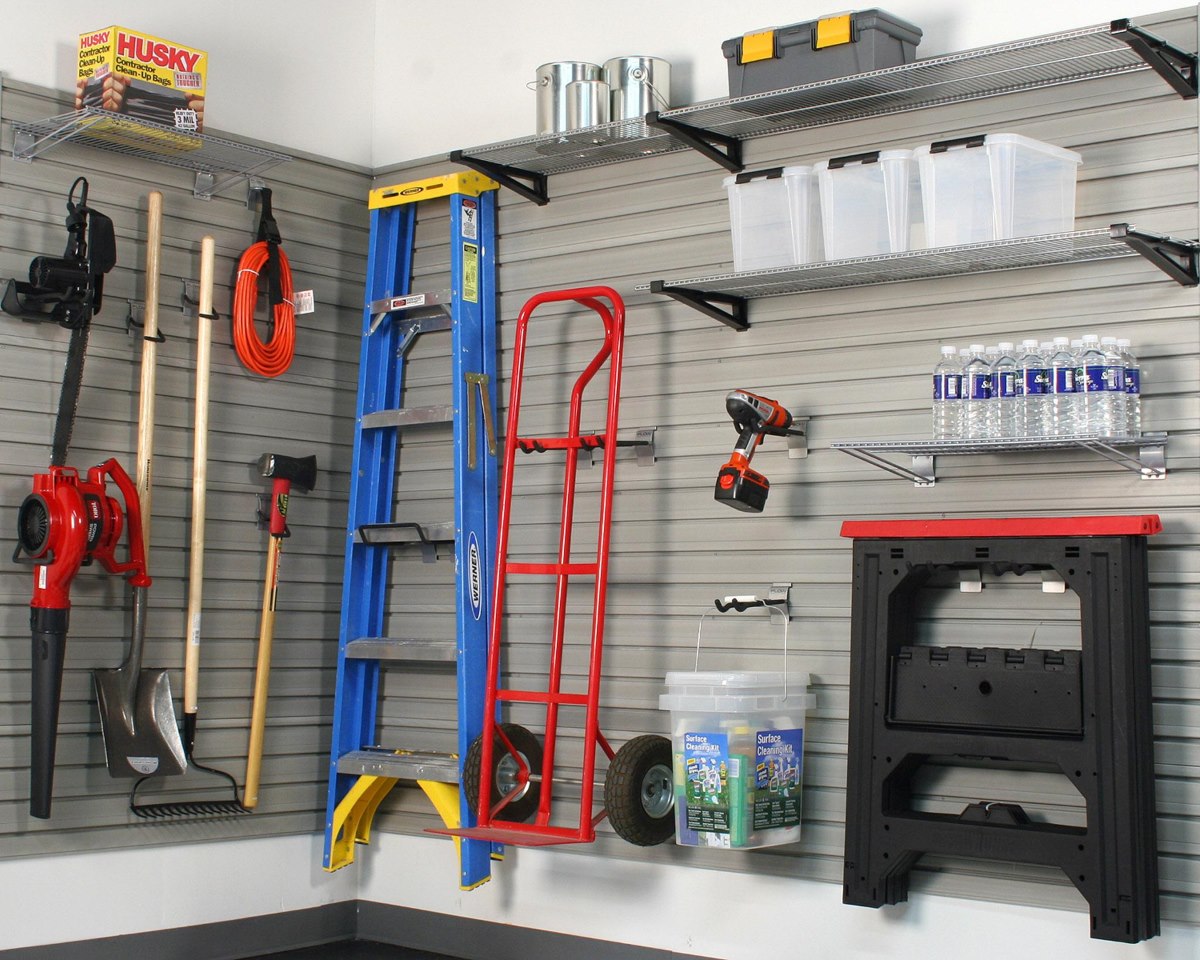

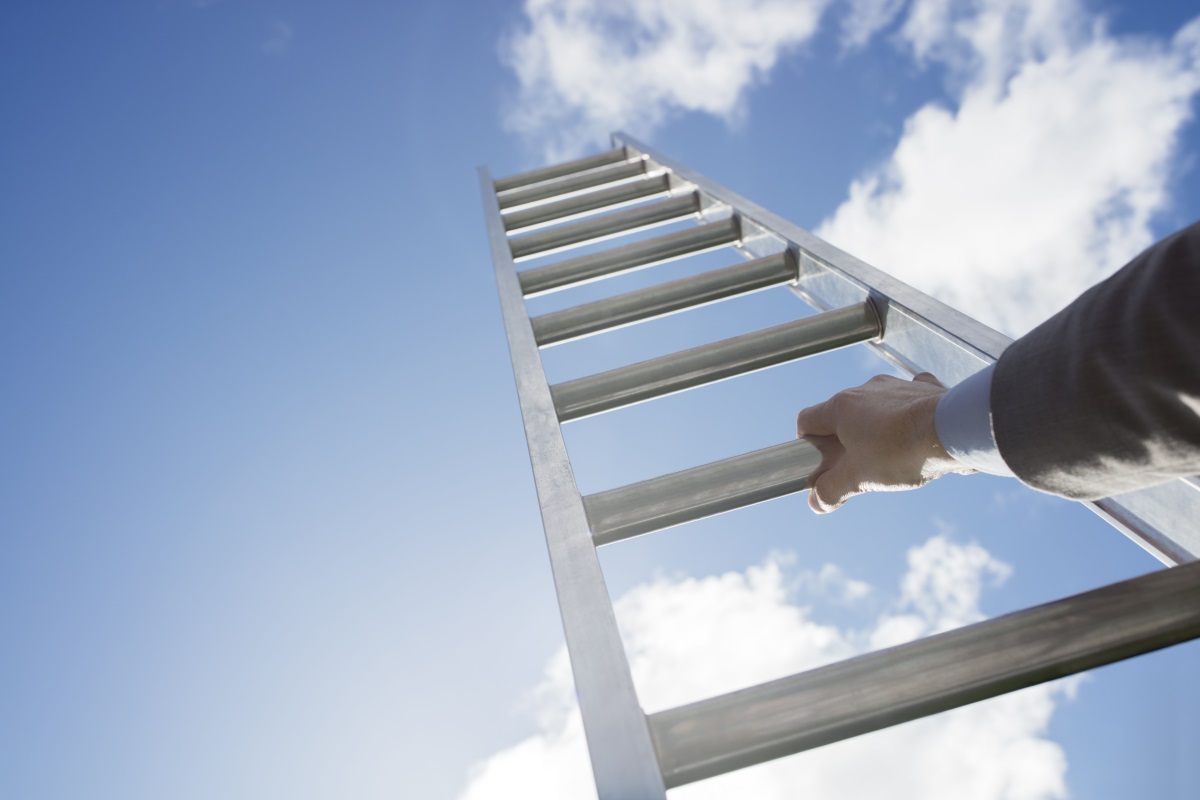
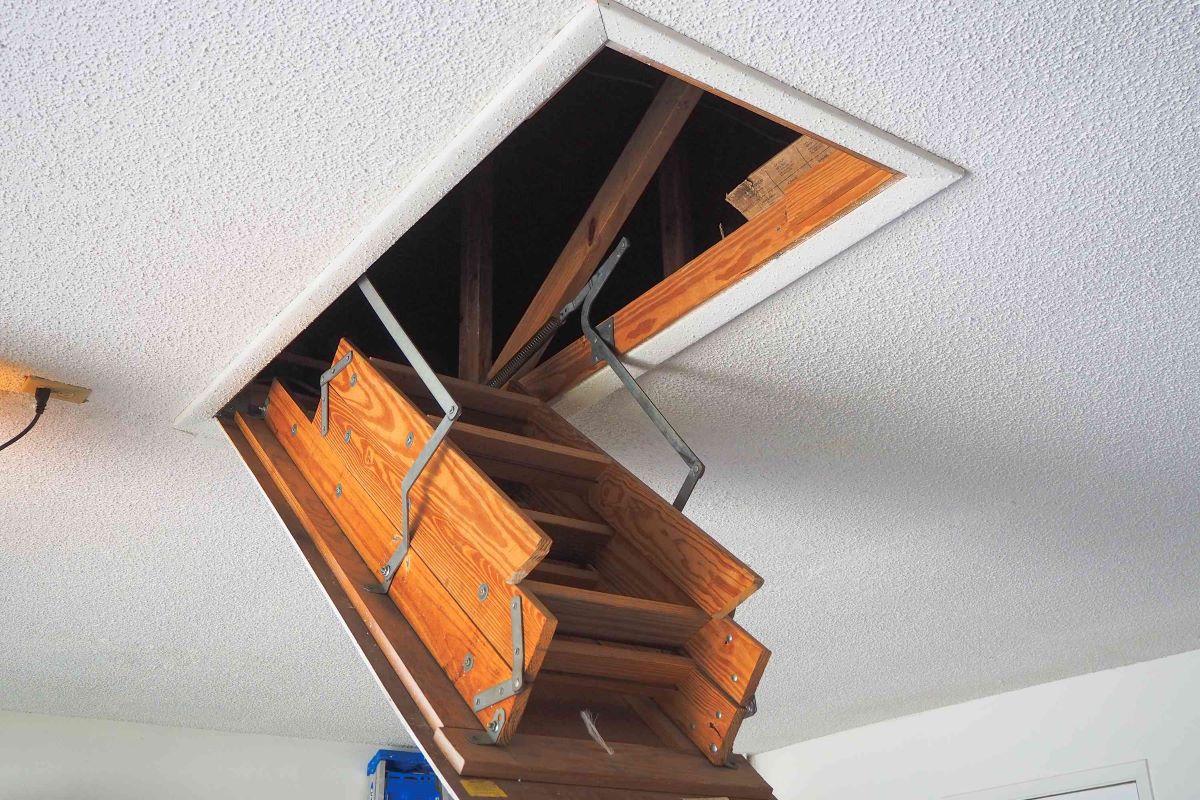
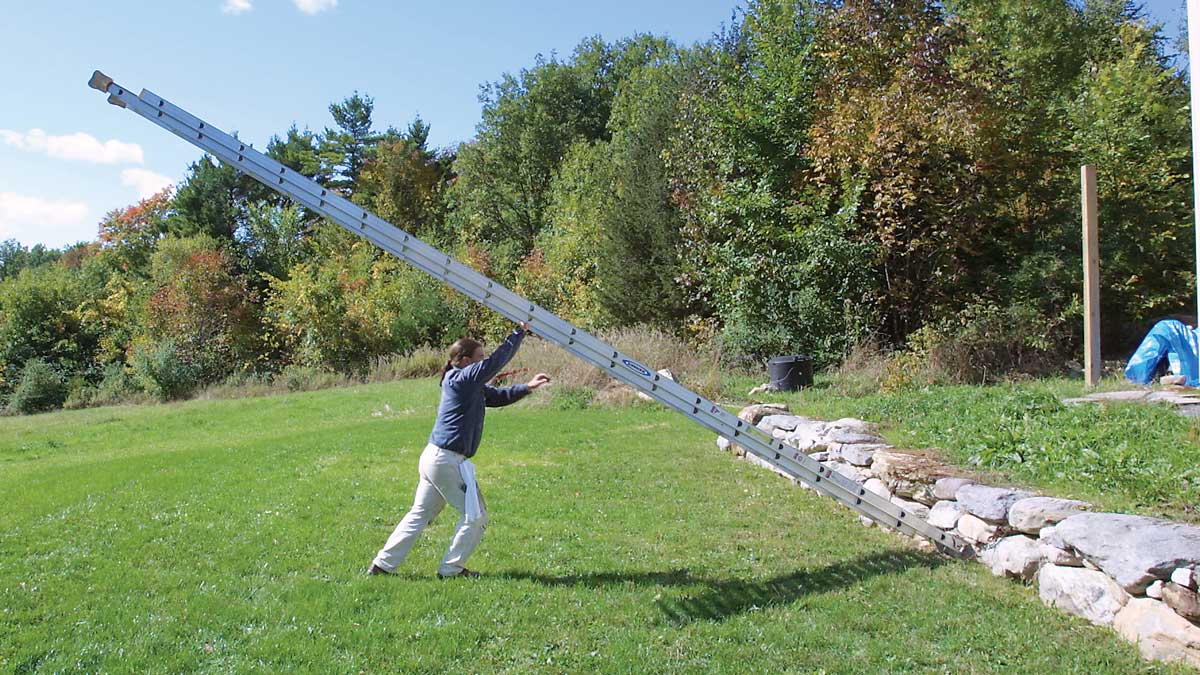

0 thoughts on “How To Stabilize A Ladder”